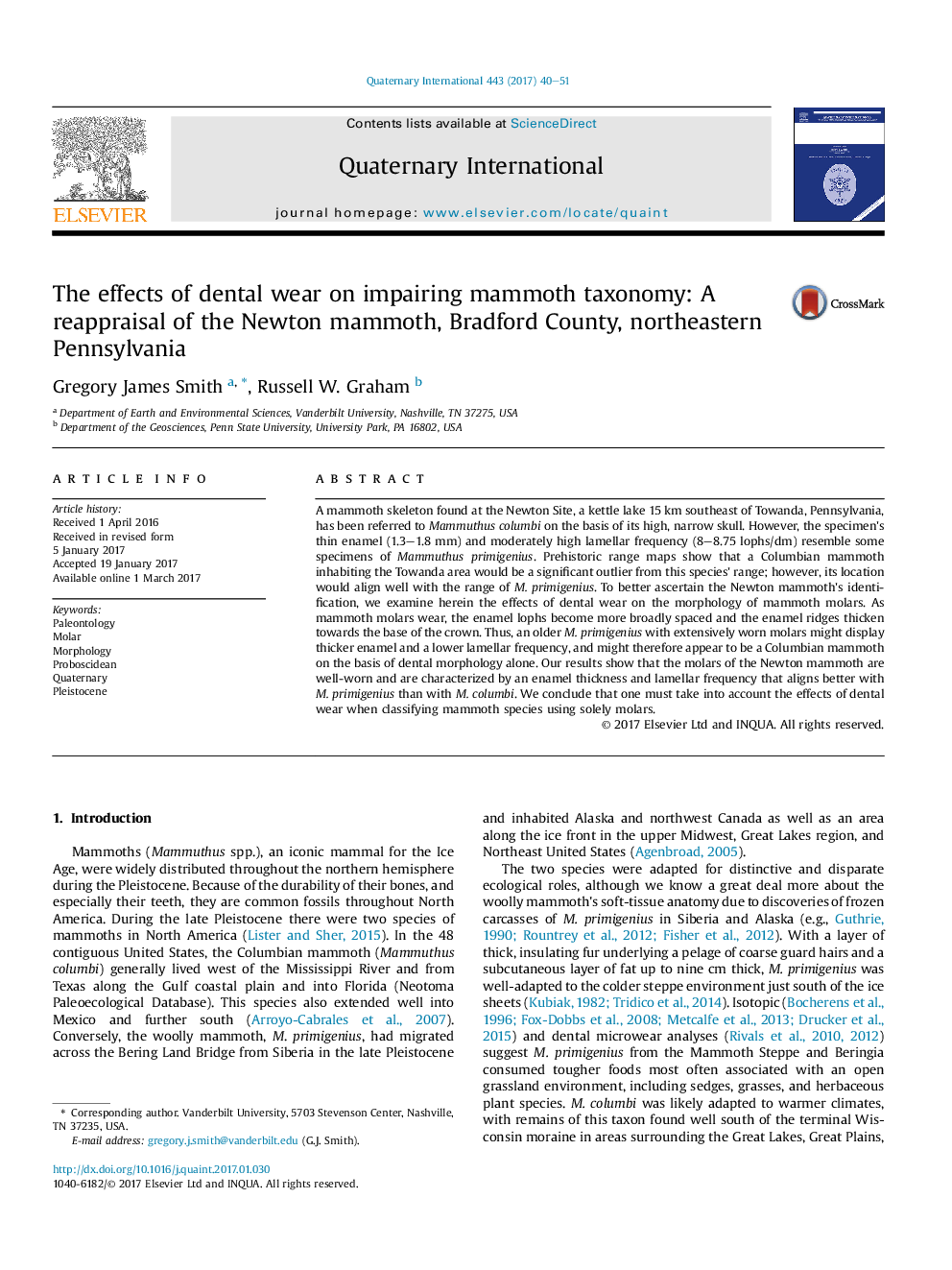| Article ID | Journal | Published Year | Pages | File Type |
|---|---|---|---|---|
| 5113152 | Quaternary International | 2017 | 12 Pages |
Abstract
A mammoth skeleton found at the Newton Site, a kettle lake 15 km southeast of Towanda, Pennsylvania, has been referred to Mammuthus columbi on the basis of its high, narrow skull. However, the specimen's thin enamel (1.3-1.8 mm) and moderately high lamellar frequency (8-8.75 lophs/dm) resemble some specimens of Mammuthus primigenius. Prehistoric range maps show that a Columbian mammoth inhabiting the Towanda area would be a significant outlier from this species' range; however, its location would align well with the range of M. primigenius. To better ascertain the Newton mammoth's identification, we examine herein the effects of dental wear on the morphology of mammoth molars. As mammoth molars wear, the enamel lophs become more broadly spaced and the enamel ridges thicken towards the base of the crown. Thus, an older M. primigenius with extensively worn molars might display thicker enamel and a lower lamellar frequency, and might therefore appear to be a Columbian mammoth on the basis of dental morphology alone. Our results show that the molars of the Newton mammoth are well-worn and are characterized by an enamel thickness and lamellar frequency that aligns better with M. primigenius than with M. columbi. We conclude that one must take into account the effects of dental wear when classifying mammoth species using solely molars.
Related Topics
Physical Sciences and Engineering
Earth and Planetary Sciences
Geology
Authors
Gregory James Smith, Russell W. Graham,
